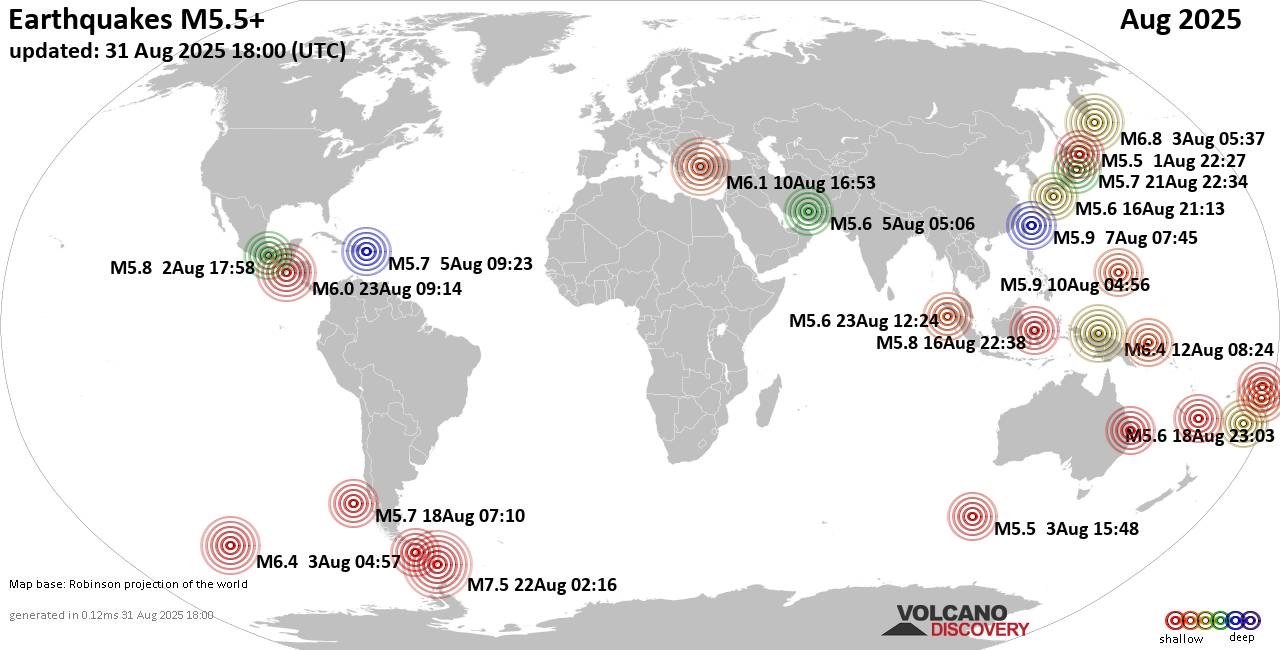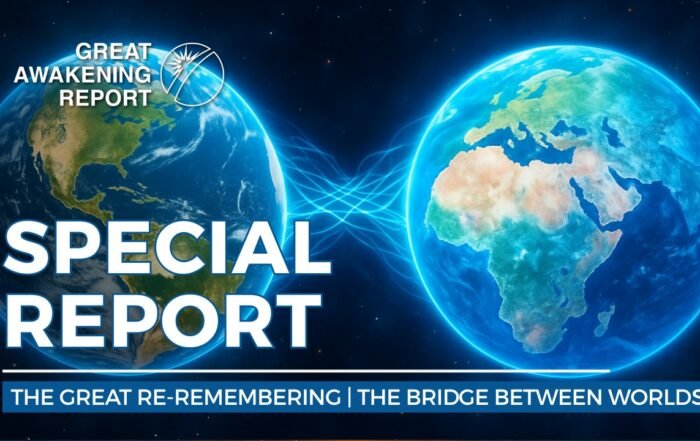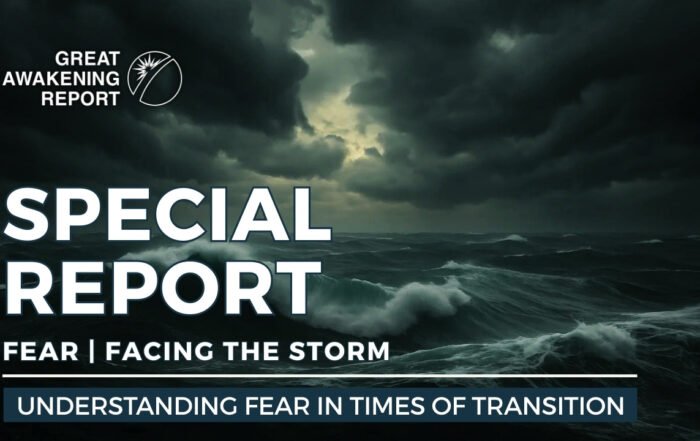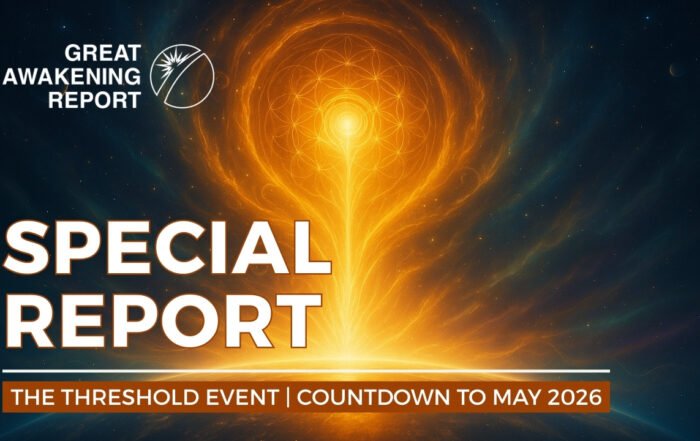
Introduction to Earthquake Trends
Recent seismic activity has shown a significant increase in frequency and intensity, raising concerns about its implications for global safety and preparedness. In 2023 alone, there have been several noteworthy earthquakes, including a 7.2 magnitude quake in Turkey and a swarm of tremors in California, emphasizing the unpredictable nature of seismic events. According to the US Geological Survey, regions along fault lines remain particularly vulnerable, making it crucial for governments and communities to enhance disaster preparedness strategies.
Understanding the Increase in Daily Quakes
The increase in daily earthquake occurrences can be attributed to several interlinked geological and anthropogenic factors. Geological activity, including tectonic plate movements, is the primary driver behind increased seismicity. The Earth’s lithosphere is constantly in motion, with plates shifting against one another. This movement can cause stress to build up until it is released as earthquakes. Recent models suggest that the rate of tectonic activity may be rising due to increased geothermal energy output and changes in the mantle’s properties, causing more frequent seismic events globally [Source: Australian Mining].
Moreover, human activities such as fracking, mining, and reservoir-induced seismicity linked to large dam projects can induce tremors, contributing significantly to the rise in reported quakes. In particular, the injection of wastewater from hydraulic fracturing has been shown to increase seismic events in previously stable regions, highlighting the complex interplay of natural and anthropogenic factors in seismic activity [Source: Farm Progress].
Regions historically viewed as seismically inactive are experiencing an uptick in earthquakes, suggesting both natural geological processes and human influences can alter earthquake patterns over time. Understanding these dynamics is crucial, as an increase in seismic activity poses significant risks to infrastructure and local ecosystems, pushing the conversation on earthquake preparedness and mitigation practices to the forefront of public safety initiatives. For further information on the implications of rising seismic activity and related geological phenomena, visit our article on the health and safety implications of natural disasters.
Recent Major Earthquake Events
In the past month, several notable earthquakes have impacted various regions worldwide, showcasing the power of nature and significantly affecting local communities.
- **Sichuan, China** – On September 6, a 6.0 magnitude earthquake struck near Jiangyou in Sichuan province, resulting in significant structural damage, at least 50 injuries, and disruptions to local infrastructure, including roads and communications [Source: Farm Progress].
- **Dodecanese Islands, Greece** – A 6.5 magnitude quake on September 8 affected the Dodecanese region. Local authorities reported no significant injuries; however, moderate damage was caused to several historic buildings and some shipping routes were disrupted [Source: Australian Mining].
- **Hokkaido, Japan** – On September 10, a 7.0 magnitude earthquake was registered off the northern coast of Hokkaido. The tremor led to a brief tsunami warning, causing evacuations along the coast, though only minor injuries were reported and power outages lasted several hours [Source: BCIS].
- **Northern California, USA** – A smaller quake measuring 4.8 hit near Redding on September 15. The impact was felt across northern California, with local emergency services responding to calls regarding minor property damage and injuries [Source: BCIS].
The effects of these earthquakes varied from structural damage and power outages to minor injuries, emphasizing the importance of preparedness and community resilience when facing such disasters. As these events unfold, local and global responses continue to evolve, aiming to mitigate the impacts on affected populations.
Technological Advances in Seismic Monitoring
Technological advancements in seismic monitoring are revolutionizing how scientists and researchers predict and analyze earthquake activity. Key developments include the integration of real-time data collection through networks of seismographs and advanced sensors that enhance earthquake detection capabilities. These systems use machine learning algorithms to identify patterns in seismic data, enabling more accurate predictions of potential earthquakes. For example, systems that analyze ground motion can capture subtle signals indicative of impending seismic events, allowing for faster alerts and response strategies.
Moreover, remote sensing technologies such as GPS and satellite imagery assist researchers in tracking shifts in tectonic plates and ground deformation related to seismic activity. This data is critical in understanding the underlying causes of earthquakes and assessing risks in vulnerable regions [Source: Farm Progress].
Additionally, innovations in data management platforms, like Sandvik’s Newtrax, emphasize the importance of streamlined data collection and validation methods, which enhance the ability of researchers and emergency responders to interpret complex data under challenging conditions. These advancements not only improve research outcomes but also empower local authorities to implement more effective mitigation strategies during significant seismic events [Source: Australian Mining].
These technological developments highlight the critical role of interdisciplinary approaches in seismology, merging geology, engineering, and data science to foster resilience against earthquakes and enhance public safety initiatives.
Global Implications and Preparedness Strategies
The increase in earthquakes globally has prompted a collective response highlighting the necessity for enhanced preparedness strategies at all levels—local, national, and international. Countries prone to seismic activity have been leveraging technology and data to improve their earthquake readiness. Innovations such as AI-driven insights that analyze seismic risks are becoming critical in designing infrastructure capable of withstanding earthquakes. For instance, platforms that integrate real-time data collection with predictive analytics enable regions to develop better response mechanisms, adjusting emergency protocols based on predicted patterns of seismic activity [Source: Australian Mining].
Furthermore, international cooperation among nations has proven vital in sharing resources, knowledge, and technologies aimed at disaster preparedness and response. Collaborative frameworks, often supported by organizations like the United Nations, are facilitating the establishment of protocols and training programs tailored to equip communities with the skills necessary to react swiftly and effectively during earthquakes. These initiatives emphasize community engagement, ensuring that local populations understand evacuation procedures and emergency response plans [Source: Farm Progress].
Moreover, education plays a significant role in community preparedness. Initiatives that raise awareness about earthquake risks and suitable response measures are crucial. Schools and local governments are increasingly incorporating disaster preparedness drills into their curricula, fostering a culture of readiness. The emphasis on practical training is designed to instill confidence within communities, equipping them to handle the aftermath of seismic events comprehensively.
As the frequency of seismic activity continues to rise, effective preparedness strategies that incorporate technology-driven solutions, international cooperation, and community education remain paramount to mitigate the impact of earthquakes on human life and infrastructure.
Looking Ahead: The Future of Earthquake Research
The landscape of earthquake research is evolving, propelled by advancements in predictive technology and comprehensive research initiatives aimed at understanding seismic activities better. Notable trends indicate a growing reliance on machine learning and big data analytics, allowing researchers to analyze vast quantities of seismic data for more accurate predictions of future earthquakes.
Current seismic activity models are enhancing the understanding of tectonic plate movements, crucial in predicting potential earthquake hotspots. Experts suggest that regions like California and the Cascadia subduction zone are likely to experience increased seismic activity in the coming years. Predictions indicate heightened risks for significant seismic events, particularly in urban areas, which can lead to devastating impacts if not adequately prepared for [Source: US Geological Survey].
Furthermore, research initiatives focus on mitigation strategies incorporating advanced engineering practices, such as retrofitting buildings and infrastructure to withstand earthquakes and developing early warning systems. The integration of real-time data allows for adaptive response strategies that can enhance community resilience [Source: Earthquake Engineering Research Institute].
Ongoing initiatives also emphasize community awareness and preparedness, ensuring that citizens know how to respond in the event of seismic activity. Educational programs aim to instill a culture of preparedness across regions prone to earthquakes [Source: FEMA]. Ultimately, the combination of predictive technology, engineering, and community engagement is shaping the future of earthquake resilience, setting a precedent that can be adopted worldwide.
Sources
Share This Report
Have questions?
At Great Awakening Report, we are dedicated to supporting your journey toward truth and enlightenment through our specialized Coaching and Consulting services.
Coaching Services: Our coaching programs are designed to guide you through personal awakening and transformation. We offer personalized sessions that focus on expanding consciousness, uncovering hidden truths, and fostering spiritual growth. Our experienced coaches provide the tools and insights necessary to navigate your path with clarity and confidence.
Consulting Services: For organizations and individuals seeking deeper understanding and strategic guidance, our consulting services offer expert analysis and solutions. We delve into areas such as global transitions, alternative news insights, and consciousness studies to provide comprehensive strategies tailored to your unique objectives.
Embark on a transformative journey with our Coaching and Consulting services, and unlock your highest potential. To learn more and schedule a session, visit our Coaching and Consulting pages.
Thank you
Thank you to our subscribers and readers for your continued support and dedication to truth and awakening. Your encouragement, engagement, and belief in our mission make everything we do possible. Together, we are expanding awareness and helping illuminate the path forward.
If you would like to further support the Great Awakening team and our ongoing efforts to share insight, knowledge, and truth, you can DONATE HERE.
With deep gratitude,
– Great Awakening Team
DISCLAIMER: All statements, claims, views and opinions that appear anywhere on this site, whether stated as theories or absolute facts, are always presented by The Great Awakening Report (GAR) as unverified—and should be personally fact checked and discerned by you, the reader.Any opinions or statements herein presented are not necessarily promoted, endorsed, or agreed to by GAR, those who work with GAR, or those who read or subscribe to GAR.Any belief or conclusion gleaned from content on this site is solely the responsibility of you the reader to substantiate.Any actions taken by those who read material on this site are solely the responsibility of the acting party.You are encouraged to think for yourself and do your own research.Nothing on this site is meant to be believed without question or personal appraisal.
COPYRIGHT DISCLAIMER: Citation of articles and authors in this report does not imply ownership. Works and images presented here fall under Fair Use Section 107 and are used for commentary on globally significant newsworthy events. Under Section 107 of the Copyright Act 1976, allowance is made for fair use for purposes such as criticism, comment, news reporting, teaching, scholarship, and research.
COMMUNITY GUIDELINES DISCLAIMER: The points of view and purpose of this video is not to bully or harass anybody, but rather share that opinion and thoughts with other like-minded individuals curious about the subject.








